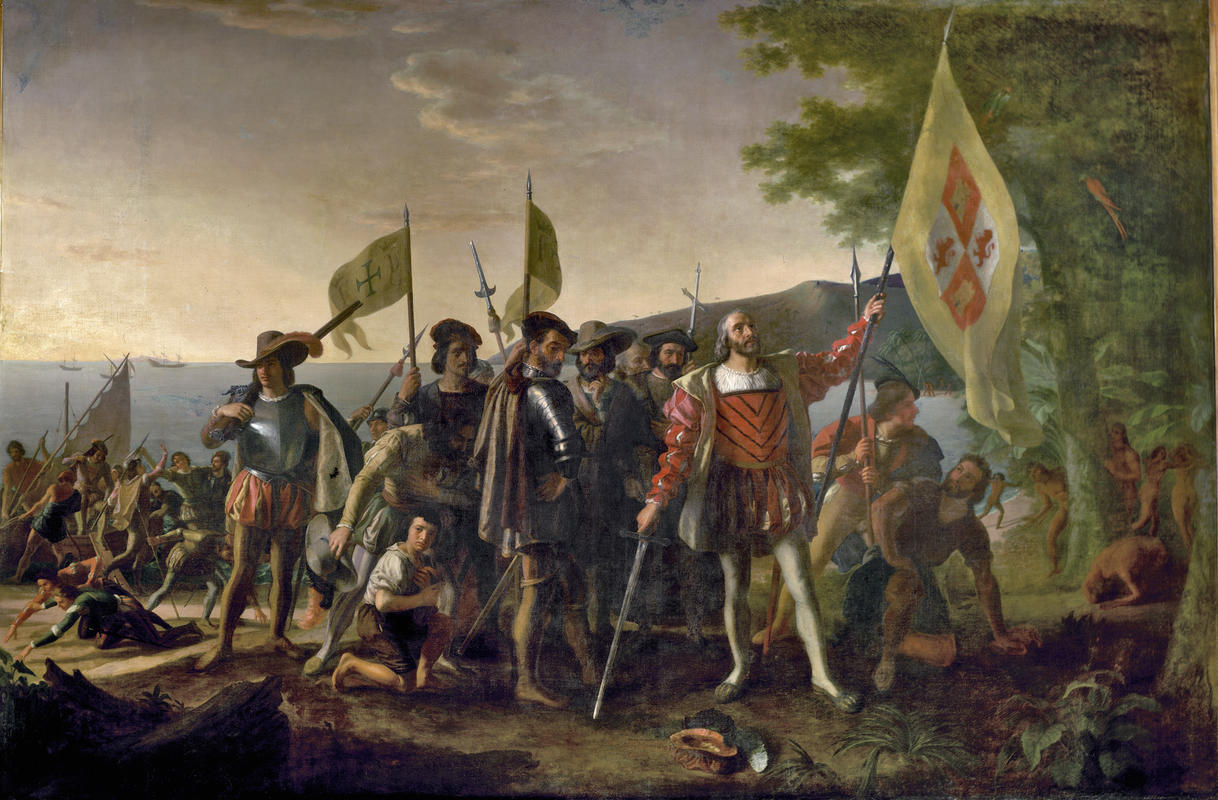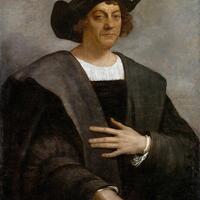More about Landing of Columbus

Contributor
When the U.S. Congress released the money, equivalent to over $400,000 in today's currency, for the Landing of Columbus, Vanderlyn had already pretty much had it.
I don't know how that kind of cash injection could leave Vanderlyn feeling out in the cold financially, unless he had a huge amount of debt, but maybe his problem was no longer the money, but his physical ailments and the feeling that nobody respected him anymore. As reported in the "New York Historical Society Quarterly": "Alone in Paris and in dire financial need, Vanderlyn complained that his friends in America had forgotten him. He became especially contemptuous of his nephew John," who he called a "wretch."
Like Columbus himself, who in his last years felt snubbed by the Crown, the elderly Vanderlyn felt he couldn't get a break: his powerful friends in government installed his Landing of Columbus, conceived by Vanderlyn and painted primarily, or entirely, by an anonymous French artist, without a milligram of pomp, and hardly any circumstance. As a second-generation immigrant, Vanderlyn thought that a stable government job would give him all the security and honor he ever wanted, but it didn't.
Like Andy Warhol, Jeff Koons, and a whole heap of other artists, Vanderlyn was producing art by proxy, giving direction to other artists, often by mail. Like Bill Watterson, creator of Calvin & Hobbes, Vanderlyn preferred to do all the work himself, but at this late stage of his life, childless, never married, concerned about money, he spent most of his time hunting for commissions rather than painting.
The Landing of Columbus, Elise Bartosik-Velez notes, is an artistic defense of the euphemistically-named Indian Removal Act, which forced indigenous peoples from the homelands which they have stewarded for thousands of years. A Cherokee elder, Mos' Sudaldihi, teaches a much more accurate phrase than "Indian Removal" for the horrifying crime: ᏓᎨᏥᎸᏍᏔᏅ, dagejilvsthanv, "when they drove us like cattle." It's hard to accept that the "land of the free" is also a land of senseless violence, but the truth, if you can choke it down, can have great nutritional value.
By the time of The Landing of Columbus, "Vanderlyn, old and bitter, felt entitled," writes Harriet Senie. Despite the portrayal of Vanderlyn by contemporary journalists, who document his long, angry rants against nearly everyone back in the States, I hesitate to label him a curmudgeon or a grump, because his problems were very real. Vanderlyn was an elderly man with serious issues, financial, physical, emotional, and spiritual, and he was tired of feeling like, to use his phrase, a "scribbler" of letters to potential patrons, rather than a painter.
Sources
- Adams, Adelaide Alice and Marie Amanda Abbot. American History as Told by American Artists: A Series of Nineteen Radio Discussions. Ann Arbor: University of Michigan broadcasting service, Extension division, 1936.
- The Atlantic Monthly, Volume 19. New York: The Atlantic Monthly Company, 1867.
- Bartosik-Velez, Elise. The Legacy of Christopher Columbus in the Americas: New Nations and a Transatlantic Discourse of Empire. Nashville: Vanderbilt University Press, 2014.
- New York Historical Society Quarterly. New York: New York Historical Society, 1968.
- Records - Columbia Historical Society of Washington, Volume 50. Washington, D.C.: Columbia Historical Society of Washington, 1980.
- Senie, Harriet. Critical Issues in Public Art: Content, Context, and Controversy. Washington, D.C.: Smithsonian Institution, 2014.
- Webster, Ian. "$12,000 in 1846 → $400,478.96 in 2020." Inflation Calculator, https://www.in2013dollars.com/us/inflation/1846?amount=12000.












